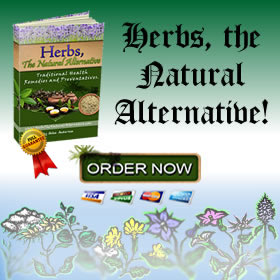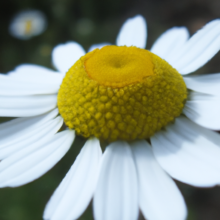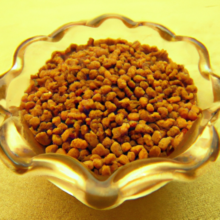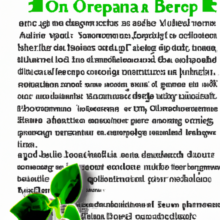How Spearmint Differs From Peppermint In Benefits And Flavor
Spearmint and peppermint are both popular herbs known for their refreshing taste and aroma, but did you know that they actually differ in terms of benefits and flavor? While both herbs offer various health benefits, spearmint tends to have a sweeter and milder taste compared to the stronger, more menthol-like flavor of peppermint. Additionally, the two herbs also have distinct uses and applications in cooking, medicine, and personal care. In this article, we will explore how spearmint differs from peppermint in terms of benefits and flavor, providing you with a deeper understanding of these fascinating herbs and their unique qualities.

Physical Characteristics
Appearance
Spearmint (Mentha spicata) and peppermint (Mentha × piperita) are both members of the mint family, but they have distinct physical characteristics that set them apart. Spearmint tends to have a vibrant green color with narrow, spear-shaped leaves, while peppermint has darker green leaves with a slightly purplish tint. The stems of spearmint are typically square-shaped and have a smooth texture, while peppermint stems are also square-shaped but have a more pronounced ridged texture.
Plant Structure
Both spearmint and peppermint are herbaceous perennial plants, meaning they live for several years and typically die back to the ground in winter. They have a spreading growth habit and can reach a height of 1 to 3 feet, depending on growing conditions. The plants produce small flowers in clusters at the top of their stems, but the flowers of spearmint are typically pink or white, while peppermint flowers are purplish in color.
Leaf Shape
One of the easiest ways to differentiate between spearmint and peppermint is by their leaf shape. Spearmint leaves are elongated and have a pointed tip, resembling a spear or lance. On the other hand, peppermint leaves are broader and more rounded, resembling a traditional peppermint candy.
Flowering
Both spearmint and peppermint plants produce flowers, but the timing and appearance of their blooms differ slightly. Spearmint generally flowers in late spring or early summer, with small, delicate flowers that are often pink or white in color. On the other hand, peppermint flowers typically appear in mid to late summer and are more vibrant and purplish in color. These flowers not only add beauty to the plants but also attract pollinators like bees and butterflies.
Growing Conditions
When it comes to growing conditions, spearmint and peppermint have similar preferences. Both plants thrive in full sun to partial shade and prefer moist, well-drained soil. They are relatively low-maintenance and can tolerate a wide range of soil conditions. However, it’s worth noting that peppermint tends to be slightly more demanding in terms of its water requirements and soil preferences compared to spearmint.
Flavor Profile
Spearmint Flavor
Spearmint is famous for its refreshing and invigorating flavor profile. It has a cool and slightly sweet taste, with a hint of tanginess. When you chew on a spearmint leaf, you’ll experience a burst of freshness that instantly enlivens your senses. The flavor of spearmint is often described as less intense and milder compared to peppermint, making it a popular choice for those who prefer a more subtle minty taste.
Peppermint Flavor
Peppermint, on the other hand, is known for its bold and robust flavor. It has a distinct cooling sensation with a strong minty taste. The flavor of peppermint is often described as sharp and highly aromatic, with a slightly bitter undertone. When you taste peppermint, it leaves a lingering cooling sensation in your mouth, making it a popular choice for those who enjoy a stronger and more pronounced mint flavor.
Minty Aroma
Both spearmint and peppermint have a delightful scent that is instantly recognizable. The aroma of spearmint is often described as sweet and herbaceous, with hints of earthiness. It has a fresh and uplifting fragrance that can instantly elevate your mood. On the other hand, peppermint boasts a stronger and more intense scent, with a cooling and refreshing quality. The aroma of peppermint is often associated with feelings of clarity and alertness.
Undertones of Flavor
While spearmint and peppermint have distinct flavor profiles, they also share some underlying similarities. Both mints have a refreshing and cooling quality that can instantly freshen your breath. They both have a slight sweetness to their taste and are often used to add a touch of freshness to various dishes and beverages. Additionally, both spearmint and peppermint have a subtle herbal undertone that adds depth and complexity to their flavors.

Medicinal Benefits
Digestive Health
Both spearmint and peppermint have long been used to support digestive health. The menthol compounds present in these mints have been found to have a calming effect on the muscles of the digestive tract, helping to soothe digestive discomfort and relieve symptoms such as bloating and cramps. Spearmint is often used to alleviate indigestion and gas, while peppermint is particularly effective in soothing irritable bowel syndrome (IBS) symptoms.
Respiratory Health
The strong aromatic properties of spearmint and peppermint make them popular choices for supporting respiratory health. The menthol content in these mints can help to relax the muscles of the respiratory tract, making it easier to breathe and relieving coughs and congestion. Both spearmint and peppermint can be consumed as teas or inhaled through steam to help clear the airways and ease respiratory symptoms.
Nausea Relief
The soothing properties of spearmint and peppermint also extend to relieving nausea. They are commonly used to alleviate symptoms of motion sickness, morning sickness during pregnancy, and postoperative nausea. Simply sipping on a cup of spearmint or peppermint tea can provide quick relief from feelings of queasiness and discomfort.
Pain and Headache Relief
Spearmint and peppermint have analgesic properties, which means they can help to alleviate pain and headaches. The cooling sensation and anti-inflammatory effects of these mints can help to reduce muscle tension and promote relaxation. Applying peppermint essential oil topically or inhaling its aroma can help to alleviate headache symptoms and provide temporary relief from pain.
Anti-inflammatory Properties
Both spearmint and peppermint contain compounds that have anti-inflammatory properties. These properties make them beneficial in reducing inflammation throughout the body, which is associated with various chronic conditions such as arthritis and inflammatory bowel disease. Consuming spearmint or peppermint regularly, either in the form of teas or as part of a balanced diet, can help to support overall inflammatory balance in the body.
Culinary Uses
Spearmint in Cooking
Spearmint is a versatile herb that adds a fresh and bright flavor to a variety of culinary creations. Its mild and sweet taste pairs well with both sweet and savory dishes. In cooking, spearmint is often used in salads, dressings, and marinades to add a refreshing twist. It can also be blended into sauces, soups, and stews to enhance the overall flavor. Additionally, spearmint leaves can be used as a garnish to add a pop of color and a hint of freshness to dishes.
Peppermint in Cooking
Peppermint’s bold and robust flavor makes it a popular choice for adding a punch of minty freshness to culinary creations. Its strong taste complements both sweet and savory dishes. In baking, peppermint extract or crushed peppermint leaves are commonly used in desserts such as brownies, cookies, and cakes to infuse them with a refreshing minty flavor. Peppermint can also be steeped in hot water to make a refreshing tea or used as a flavoring in savory dishes like lamb or pork.
Beverage Enhancer
Both spearmint and peppermint are widely used as flavor enhancers in various beverages. Spearmint leaves are often muddled or steeped to make a refreshing herbal tea. The addition of spearmint leaves to iced teas, lemonades, or fruit-infused water can instantly uplift the flavor profile and provide a cooling sensation. Peppermint, with its intense and invigorating taste, is commonly used as a flavoring in cocktails, iced coffees, and hot chocolates to create a delightful minty twist.
Desserts and Baked Goods
Spearmint and peppermint are staple ingredients in many dessert recipes. Spearmint leaves or extract can be added to ice creams, sorbets, and smoothies to impart a refreshing and cooling flavor. Peppermint, with its bolder flavor, is a popular choice for flavoring candies, chocolates, and ice cream. Whether in the form of mint chocolate chip cookies or a classic peppermint patty, these mints add a burst of flavor to any sweet treat.
Savory Dishes
While mints are often associated with sweet treats, they can also be used to add a unique twist to savory dishes. The fresh and herbaceous flavor of spearmint can enhance the taste of salads, dressings, and sauces. It pairs well with lamb, chicken, and fish dishes, and can be used to make flavorful marinades or rubs. Peppermint, with its stronger flavor, can be used sparingly in savory dishes such as pesto, salsa verde, or Greek-style tzatziki sauce, where a touch of freshness is desired.

Oral Health
Fresh Breath
One of the most well-known benefits of both spearmint and peppermint is their ability to freshen breath. The menthol compounds present in these mints have natural antibacterial properties that help to kill odor-causing bacteria in the mouth. Chewing on a fresh sprig of spearmint or peppermint leaves or using mints or chewing gums containing these mints can provide instant relief from bad breath and leave your mouth feeling clean and refreshed.
Tooth and Gum Care
Spearmint and peppermint are known for their oral health benefits. The antibacterial and anti-inflammatory properties of these mints can help to promote healthy teeth and gums. Spearmint and peppermint extracts are often used in toothpaste, mouthwashes, and dental floss to help prevent tooth decay, freshen breath, and soothe gum inflammation. Regular use of oral care products containing these mints can contribute to a healthier mouth and overall oral hygiene.
Mouthwash and Toothpaste
The refreshing and antiseptic qualities of spearmint and peppermint make them popular ingredients in natural mouthwashes and toothpaste. Spearmint and peppermint essential oils are known for their ability to kill bacteria, reduce plaque formation, and freshen breath. Using a mouthwash or toothpaste containing these mints can provide a cooling sensation, deeply clean your mouth, and leave you with a long-lasting fresh feeling.
Flavoring Dental Products
In addition to their oral health benefits, spearmint and peppermint are also used to add a pleasant taste to dental products. Their natural and invigorating flavors make toothbrushing a more enjoyable experience. Many toothbrushes and dental flosses are infused with spearmint or peppermint, giving them a delightful taste that leaves your mouth feeling clean and refreshed.
Aromatherapy and Essential Oils
Soothing and Relaxing
Spearmint and peppermint essential oils are widely used in aromatherapy for their soothing and relaxing properties. The fresh and invigorating scent of these oils can help to uplift the mood, reduce stress, and promote a sense of calmness and relaxation. Diffusing spearmint or peppermint essential oil in your home or adding a few drops to your bath can create a soothing and refreshing environment.
Energy and Mind Boost
The aroma of spearmint and peppermint essential oils has energizing and stimulating effects on the mind and body. Inhaling these oils can help to increase alertness, improve focus, and enhance cognitive performance. Diffusing these oils in your workspace or applying them topically to your temples or wrists can provide a natural boost of energy and improve mental clarity.
Anxiety and Stress Relief
The soothing and cooling properties of spearmint and peppermint essential oils make them valuable allies in relieving anxiety and stress. The aroma of these oils can help to reduce feelings of anxiety, promote relaxation, and ease tension. Massaging diluted spearmint or peppermint oil into your temples or practicing deep breathing with a few drops of oil on a tissue can help to alleviate stress and bring a sense of calmness.
Topical Applications
Both spearmint and peppermint essential oils have topical applications that can provide various benefits. Their cooling and anti-inflammatory properties make them effective in relieving muscle pain, headaches, and insect bites. Diluting the oils in a carrier oil, such as coconut or almond oil, and massaging them onto the affected areas can provide soothing relief and promote healing.
Traditional and Folk Medicine
Historical Usage
The use of spearmint and peppermint in traditional and folk medicine dates back centuries. These mints have been prized for their therapeutic properties and have been used to treat various ailments in different cultures around the world. Ancient Greeks and Romans used these mints to aid digestion, alleviate headaches, and freshen breath. Traditional Chinese medicine and Ayurveda have also incorporated spearmint and peppermint for their medicinal benefits.
Herbal Remedies
Spearmint and peppermint have been used in herbal remedies for a wide range of health conditions. The menthol compounds present in these mints have been found to have antimicrobial, antifungal, and antiviral properties, making them effective in fighting infections. They have also been used in herbal teas and infusions to soothe digestive complaints, relieve nausea, and promote overall wellness.
Anti-fungal and Anti-bacterial
Spearmint and peppermint possess natural antifungal and antibacterial properties that have made them valuable in traditional medicine. These mints have been used to treat fungal infections such as athlete’s foot and yeast infections. Peppermint oil, in particular, has been studied for its antimicrobial activity against various bacteria, making it a potential natural alternative for fighting bacterial infections.
Digestive Aid
The use of spearmint and peppermint as digestive aids can be traced back centuries. These mints have been used to soothe stomach discomfort, alleviate indigestion, and relieve symptoms of bloating and gas. The menthol compounds in these mints have a relaxing effect on the muscles of the gastrointestinal tract, facilitating digestion and reducing spasms.
Soothing Skin Irritations
The soothing and anti-inflammatory properties of spearmint and peppermint make them ideal for addressing various skin irritations. These mints have been traditionally used to relieve itching, reduce redness, and promote healing in conditions such as insect bites, rashes, and minor burns. Applying a diluted solution of spearmint or peppermint oil to the affected area can provide calming relief and aid in the healing process.
Availability and Cultivation
Commercial Availability
Both spearmint and peppermint are commercially available herbs and are widely accessible. You can find fresh spearmint and peppermint leaves in grocery stores, farmers’ markets, or even grow them in your garden. Dried spearmint and peppermint leaves, as well as essential oils and extracts, are also commonly available in supermarkets and health food stores.
Growing Spearmint
Spearmint is a relatively easy herb to grow, making it a popular choice for home gardeners. It thrives in full sun to partial shade and prefers moist, well-drained soil. You can start growing spearmint from seeds or purchase young plants from a nursery. Spearmint has a spreading growth habit, so it’s best to plant it in a container or a designated area in your garden to prevent it from taking over other plants.
Growing Peppermint
Peppermint has similar growing requirements to spearmint but tends to be slightly more demanding in terms of its water and soil preferences. It also prefers a slightly shadier spot compared to spearmint. You can start growing peppermint from seeds or purchase young plants. It’s important to note that peppermint can spread aggressively through underground runners, so it’s recommended to plant it in containers or use barriers to prevent it from spreading uncontrollably.
Use in Traditional Cultures
Spearmint and peppermint have been used in traditional cultures for centuries. From ancient Greek and Roman civilizations to traditional Chinese medicine and Ayurveda, these mints have been valued for their medicinal properties. They have been used in traditional herbal remedies, culinary preparations, and even as part of spiritual ceremonies. Today, both spearmint and peppermint continue to be incorporated into various cultural practices and traditional healing systems worldwide.
Scientific Research and Studies
Active Compounds
Spearmint and peppermint owe their unique characteristics and health benefits to their active compounds, particularly menthol. Menthol is a naturally occurring compound found in these mints, which gives them their cooling and refreshing properties. It acts as a natural analgesic, anti-inflammatory, and antimicrobial agent. Other compounds found in spearmint and peppermint include menthone, limonene, and pulegone, which contribute to their distinct flavors and aromas.
Health Effects
Scientific research has explored the health effects of spearmint and peppermint, showcasing their potential therapeutic value. Studies have shown that these mints can help to alleviate digestive disorders, relieve pain, reduce inflammation, and support respiratory health. The menthol compounds in spearmint and peppermint have also been found to have antioxidant properties, which can help to protect against oxidative stress and promote overall well-being.
Comparative Studies
Several comparative studies have investigated the differences between spearmint and peppermint in terms of their chemical composition and health benefits. While both mints share some similarities in terms of their medicinal properties, these studies have revealed variations in the concentrations of active compounds and the magnitude of their effects. For example, peppermint has been found to exhibit stronger antimicrobial and analgesic properties compared to spearmint.
Clinical Applications
The therapeutic properties of spearmint and peppermint have led to their exploration in clinical applications. Clinical studies have shown the potential of these mints in alleviating symptoms of conditions such as IBS, dyspepsia, and tension headaches. Peppermint oil preparations, including enteric-coated capsules and topical solutions, have been studied for their effectiveness in the management of these conditions. However, it’s important to note that further research is still needed to confirm these findings and establish standardized dosages for clinical use.
Conclusion
In conclusion, spearmint and peppermint may be part of the same mint family, but they have distinct physical characteristics, flavor profiles, and health benefits. Spearmint offers a milder and subtler flavor, making it an excellent choice for those seeking a gentle minty taste. It excels in supporting digestive health, freshening breath, and adding freshness to various culinary creations. On the other hand, peppermint boasts a bolder and more pronounced mint flavor, perfect for those who crave a stronger sensory experience. It shines in providing relief from digestive discomfort, headaches, and respiratory issues. Both mints have been valued in traditional medicine and are supported by scientific research, showcasing their potential in promoting overall well-being. Whether you choose spearmint or peppermint, rest assured that both options provide an array of benefits to enhance your health, culinary endeavors, and self-care rituals. The choice ultimately comes down to personal preference, so feel free to explore and savor the unique qualities of each mint variety.




